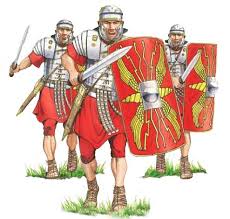Welcome to Year 3!
Summer 2
The Romans in Britain
Were the Romans cruel conquerors or brave builders?

In this topic the children will gain an overall understanding of the Roman civilisation, the reasons for the invasion of Britain, what life was like in Roman Britain and how the Roman Empire ended.
The Year 3 Team
Topaz Class is taught by Ms. Page with Mr. Wells covering on Wednesdays. In Turquoise Class, Ms. Cowdrith teaches from Monday to Wednesday and Mr. Wells teaches on Thursday and Friday. We also have our fantastic teaching assistants, Mrs. Giddings and Ms English who support learning across Year 3.
We encourage children to drink throughout the day. Please send your child in each day with a named water bottle.
Throughout the week, we work independently and with a learning partner. These pairings will change throughout the year so that everybody gets the opportunity to work with a variety of classmates.
In Year 3 we love reading and we try to read as much as possible. We encourage parents to read regularly with their children and to record this in their child’s reading record. Children may also record their own independent reading in their reading record.

Our PE days:
Topaz and Turquoise’s P.E. days are MONDAY (swimming) and FRIDAY (outdoor).
SWIMMING: FROM MONDAY 12TH MAY to MONDAY 14TH JULY
Children will need to bring with them:
- Swimming costume
- Towel
- Swimming cap (these must be worn as part of the pool policy)
- Goggles (optional)
- Bag to keep everything in
- Underwear (for if you come in dressed in your swimming costume underneath)
- Flip flops/crocs for the side of the pool (optional)
Please ensure that the children bring their PE kits in a bag to change into.
We require children to wear navy shorts and a white T-shirt. If the weather is cooler, navy jogging trousers and a navy sweatshirt may be worn. They should come into school in or bring bring trainers or plimsolls.
If your child does not have a PE kit or have inappropriate jewellery, they cannot partake in PE. Please contact Mr. Wells, Ms. Cowdrith or Ms. Page via the school office if you are having difficulties finding a PE kit.
If your child has earrings which cannot be taken out, they MUST come to school with tape.
Reading:
We have an amazing library filled with a variety of books to enthuse all children’s interests. Children have the opportunity to take book out of the library, but we ask that, once they have finished the book, they return it before taking home another.
Homework:
Homework is set on Friday and due by Wednesday of the following week. To ensure children can remember these, children should practise spellings on SpellingFrame and Timestables on TTRockstars for short periods at a number of times a week.
Useful Information:
Y3 Long Term Plan Overview 2024-25
Statutory spellings word mat years 3 and 4
Reading & Speaking Assessment Statements

